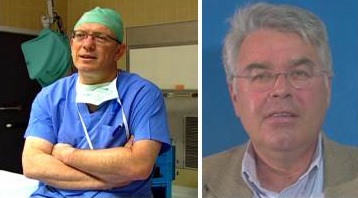
Prof. Meir Liebergall, Head of Orthopedics at the Hadassah Medical Center, and Dr. Yoav Matan, Director of the Joint Replacement Center at Hadassah Hospital-Mount Scopus, who performed the world’s first computer-guided hip replacement operation two years ago, have pioneered another new technology. They have replaced electro-optics with electro-magnetic technology, further refining computer-guided joint replacement surgery. This new technology not only enhances precision in the operating room, but may also shorten the patient’s recovery period and hospital stay.Electro-magnetic technology enables surgeons to operate without constantly considering the computer’s location. Most medical centers that perform computer-guided surgery use electro-optic technology, which requires the surgeons to maintain a continuous line of vision between the computer and the site of the patient’s surgery. This forces them to alter their location during the operation, which prolongs the procedure.“This new technology ensures that Hadassah will maintain its position as a world leader in computer-guided orthopedic surgery,” notes Prof. Liebergall, whose 12-person team performs about 600 joint replacements a year, 230 of which are knee replacements. “We are proud that giant American corporations such as Zimmer and Medtronics, which developed these technologies, chose Hadassah in Jerusalem as a medical center to install and implement the latest refinement of their sophisticated computer navigation system.” The new electro-magnetic technology has already been used in five operations.
Computer navigation systems provide surgeons with an accurate three-dimensional virtual picture of the surgical area. This picture is continuously transmitted to a computer screen in front of them as they operate. Special sensors attached to the patient’s body convey data to the computer. This data guides the surgeons in positioning the joint replacement through a display of the exact coordinates of the surgical site. The complex procedure is conducted through a minimal incision of two inches!
